Tuesday April 16, 2024
Case of the Week
Wild Bill Russell's "Artistic" Unitrust
Case:
Bill Russell grew up on the Great Plains. During his youth, he was a rodeo bull rider and gained fame as "Wild Bill" for his daring exploits. Bill was an artist at heart and soon decided to move on to his artistic pursuits. He traveled throughout America and Europe and studied all of the great modern and classical artists. In France, he was greatly moved by the delicate works of Impressionist painters Monet and Manet and the bold colors and brush strokes of Van Gogh. Upon his return to his beloved great plains of the west, Bill combined the subtlety of the Impressionists, the colors of Van Gogh and his own unique skills. His Impressionist Western landscapes, paintings of cowboys and depictions of life on the ranch became treasured by art collectors nationwide.Question:
Bill was rapidly gaining a national reputation. His Western Impressionist art exhibits would draw art lovers from America and the world. He was selling his paintings for $75,000 or more and, as a result, was facing a much higher income tax bill. Bill called his CPA, Helen, and said that he thought there must be a way to sell his paintings tax free. After talking to the gift planner at the Western Museum, Helen called Bill and exclaimed, "I found the answer. We can sell your paintings tax free!"Solution:
Helen explained the benefits of giving Bill's paintings to a charitable remainder unitrust. Generally, the unitrust will use either a net income plus makeup or a FLIP structure. If a FLIP unitrust is selected, the trigger event for the FLIP would be the sale of the art. The FLIP trust would operate as a net income plus makeup unitrust until the art is sold. On the January 1, following the sale, the FLIP trust would become a standard unitrust and begin making the stated trust percentage payouts to Bill. The FLIP event can only occur once for a unitrust. Because Bill plans to make additions to his unitrust in the future, the net income plus makeup type is the best fit.When art is transferred to a charitable remainder trust, there is no charitable deduction for a future interest in tangible personal property. The deduction is created only after all "intervening interests" have expired. Sec. 170(a)(3). Bill's income interest in the unitrust would qualify as an intervening interest. Therefore, when art is transferred to a charitable remainder unitrust, there is no charitable deduction at that time. However, if the art is then sold by the trust, the charitable deduction is available in the year of the sale of the asset. After the art has been sold and cash has been received by the trust, the intervening interest in the tangible personal property expires. Reg. 1.170A-5(a)(1).
Because Bill created the work of art, that property is considered work created in "the ordinary course of trade or business." Therefore, his artwork would be deemed ordinary income property. Reg. 1.170A-4(b)(1). If an ordinary income asset is placed into a charitable remainder trust, there is a proportionate deduction only for the gifted portion of the artist's cost basis. Sec. 170(e)(1). Bill will not generate a substantial charitable deduction with a gift of his own art.
In order to calculate the charitable deduction, both of the above rules must be applied. The calculation will be deferred under the "intervening interest" rule. Each transfer to a charitable trust must be valued on a "valuation date." Sec. 7520(d). For Bill's gift of art to the unitrust, the value is first reduced from fair market value to cost basis. Tangible personal property deductions are limited to the lesser of the cost basis or the fair market value. However, there still must be a valuation to determine which value is used to calculate the charitable deduction.
When the asset is sold, the intervening interest has terminated and the valuation date is set. The charitable deduction will be valued based on the lesser of cost basis or fair market value, not the sales proceeds. The required Applicable Federal Rate (AFR) will be the rate for the month of the valuation date or either of the two months prior to the valuation date. Sec. 7520(a)(2). The highest rate will produce the largest deduction.
Bill's cost basis is less than the fair market value, his cost basis consists of only the cost of the paint and canvas for the paintings. He will receive a small deduction based on his cost basis. But his primary goal is to sell the paintings tax free. Bill decided to use the unitrust to sell half of the paintings he creates each year. "Wow," he thought. "I cut my income in half and saved enough taxes to feed my horse, Trigger, for years. This is the best deal around!"
Bill funded the net income plus makeup type unitrust with a painting. As each painting sold, he continued to add new paintings to his unitrust. In time, Bill had over $1 million in value in his unitrust.
Published October 28, 2022
Previous Articles
LoBank Shareholders Vote to Sell






